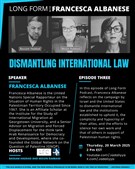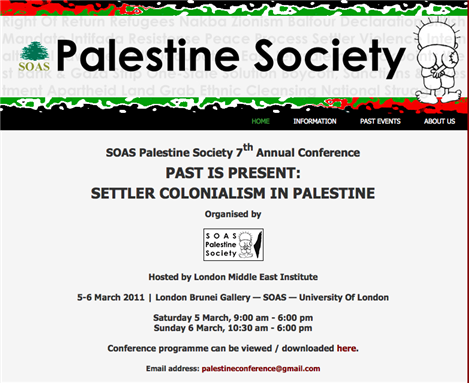[The following report is the latest from the International Crisis Group (ICG) on Syria.]
Syria`s Mutating Conflict
Executive Summary
At a distance, Syria’s conflict can resemble a slow, painful slog, punctuated by intermittent accelerations and apparent tipping points, influenced by international activity. Zoom in, and one can cast such impressions aside. Diplomatic manoeuvrings have ended up being little more than inertia masquerading as motion. The West used them to pretend it was doing more than it was; Russia exploited them to feign it backed the Syrian regime less than it actually did. Meanwhile, in Syria, one sees neither deadlock nor abrupt transformation; virtually everything has been changing but at a steady pace: the shape of the conflict; civil society dynamics; sectarian relations; and the very nature of the regime the opposition seeks to depose.
Not all is heading in the wrong direction; some developments have been surprisingly uplifting. But there are more than enough ominous trends, none more alarming than these: a regime seemingly morphing into a formidable militia engaged in a desperate fight for survival; an Alawite community increasingly embattled and persuaded its fate hinges entirely on the regime’s; and an opposition that, despite sometimes heroic efforts to contain them, is threatened by its own forms of radicalisation. Together, this could portend a prolonged, ever more polarised, destructive civil war.
The regime almost certainly will not change its ways, and so the burden must fall on the opposition to do what – given the immensity of its suffering – must seem an improbable undertaking: seriously address the phenomena of retaliatory violence, sectarian killings and creeping fundamentalism within its ranks; rethink its goal of total regime eradication and instead focus on rehabilitating existing institutions; profoundly reassess relations with the Alawite community; and come up with forward looking proposals on transitional justice, accountability and amnesty.
First things first: Syria indeed has become an arena for outside meddling, but the meddling has been far more effective at sustaining the fighting than ending it. The joint UN/Arab League envoy, Kofi Annan, sought to mediate, but Syrians and non-Syrians alike backed him for opposite reasons and in entirely self-serving ways. Because the mission’s success was predicated on finding middle ground when most parties yearned for a knockout punch, few truly wished it well, even as no one wanted to be caught burying it.
International attitudes might yet change: an especially large-scale massacre or, more likely, regime use or loss of control of chemical weapons could trigger Western military action; Turkey or Jordan, alarmed at the rate of refugee inflows, could establish a safe-haven in Syrian territory; in the event of Western intervention, Iran or Hizbollah could reciprocate on the regime’s behalf. For now, such scenarios are entirely hypothetical. The bottom line at this stage is that the conflict will be sustained and influenced by outside parties but not determined by them. That unenviable role will fall on Syrians.
That is why by far the more significant dynamics are those unfurling on the ground. One is tempted to say that the regime has been uniformly cold-blooded and indiscriminate from the start, but that is not so. The conflict experienced several phases: from the regime’s political concessions, both half-hearted (which prompted stronger popular demands) and coupled with brutal repression (which further undermined their credibility); to its so-called security solution (which, by seeking to force entire communities into submission further energised the opposition and pushed it toward armed resistance); and, finally, to its so-called military solution (a scorched earth policy of rampant destruction and looting that turned what once was viewed as a national army into a broadly reviled occupation force).
With each stage, the regime burned yet another bridge, leaving it with neither way back nor way out. Just as the political solution undermined those involved in politics and the security situation wrecked the security services’ ability to operate, so did the military solution eviscerate the army’s credibility.
Social dynamics have evolved as well, a case of what one might call the good, the bad and the ugly. The good was better than anticipated: a remarkably vibrant, courageous and resilient civil society that has mobilised networks of assistance and kept in check some of the worst forms of violence to which any armed opposition operating in a poisonous environment might have resorted. Intensified regime brutality failed to subdue popular protests; if anything, it gave them a shot in the arm. Surprising none more than itself, Syria’s opposition rediscovered a sense of solidarity, community and national pride.
The bad involves those features (sectarianism, fundamentalism, jihadi and foreign fighters) that a prolonged battle virtually was bound to unearth and attract and that the regime did its utmost to exacerbate. Several opposition groups have adopted an increasingly fundamentalist discourse and demeanour, a trajectory that mirrors the conflict’s gradually deadlier and more confessional turn; popular loss of faith in the West; as well as mounting pledges of support from Gulf Arab states such as Saudi Arabia and Qatar. All this could be – and, looking back, was predicted to be – far worse. In the tug of war between society’s demons and its ability to resist them, the most encouraging aspect has been Syrians’ at times striking self-awareness, grasp of dangers ahead and attempts at course correction. Yet, this hardly justifies complacency.
That is because the ugly is truly alarming. From the start of the crisis, the gulf between pro-opposition and pro-regime constituencies has grown exponentially. As if living in parallel worlds, each ostracises the other, meeting almost only in battle. Among armed rebels, activists and protesters, deeply-rooted, atavistic anti-Alawite (and anti-Shiite) prejudice resurfaces more intensely as time goes by: the minority community’s ways are alien, their mores primitive, their presence unnatural. Likewise, when evoking the fate of their foes, even mainstream Alawites can resort to bloodcurdling language.
Whether it be their perceptions of past, present or future, the two sides stand poles apart. Opposition circles tend to focus on the injustices perpetrated by a minority, Alawite-dominated regime; identify their current oppressors as mostly Alawite security forces; celebrate a newly discovered culture of solidarity and social cohesion; and look forward to the day the present power structure will be undone.
Alawites for the most part recall centuries of discrimination and persecution at the hands of distant rulers and urban elites, often drawn from the surrounding Sunni majority. They can see nothing of the revived sense of camaraderie from which, their own tremendous losses and pain notwithstanding, they have been excluded. They experience solely the darkest side of a merciless conflict. And, whether or not they took part in regime brutality, they expect to pay a heavy price should President Bashar Assad be toppled: the existing security services will be wiped out; the Baath party probably will be outlawed; and bureaucratic purges likely will occur. Contrary to conventional wisdom, Syria’s is not an Alawite regime, and that community hardly lives in opulence. But it is a regime thanks to which the Alawites overcame their second-class status and escaped a history of harassment and massacres. Members of the opposition might contemplate triumphant success. Alawites worry about collective eradication.
Of all the ongoing changes, perhaps the most significant and least appreciated is what, over time, has become of the regime. The one that existed at the outset of the conflict almost certainly could not have survived the spectacular killing of top officials in the heart of its traditional stronghold; street combat in Damascus, Aleppo and a string of other towns; the loss of important border crossings with Turkey and Iraq; all amid near-total economic devastation and diplomatic opprobrium. That, a year and a half later, its new incarnation not only withstood those blows but vigorously counterpunched sends a message worthy of reflection.
As its political backbone disintegrates, the regime is being reduced to its repressive apparatus, while the latter itself gradually morphs into an entity more akin to a militia than an army in both make-up and ethos. The regime essentially has been stripped down to a broadly cohesive, hardcore faction fighting an increasingly bitter, fierce and naked struggle for collective survival. It is mutating in ways that make it impervious to political and military setbacks, indifferent to pressure and unable to negotiate. Opposition gains terrify Alawites, who stand more firmly by the regime’s side. Defections solidify the ranks of those who remain loyal. Territorial losses can be dismissed for the sake of concentrating on “useful” geographic areas. Sanctions give rise to an economy of violence wherein pillaging, looting and smuggling ensure self-sufficiency and over which punitive measures have virtually no bearing. That the regime has been weakened is incontrovertible. But it has been weakened in ways that strengthen its staying power.
These multiple mutations carry practical implications. First, from a military standpoint, it is becoming clearer by the day that the outcome will be much messier than either party to the conflict once hoped. The regime will not succeed in suppressing the armed groups; if anything, its ruthless practices have guaranteed a virtually limitless pool of recruits prepared to fight with the opposition at any cost. Conversely, both the regime – by design – and its opponents – through negligence – appear to have ensured that a large portion of the Alawite community now feels it has no option but to kill or be killed.
Secondly, there can be nothing more to expect from a regime that, by its very nature – never much of an institutionalised state, no longer genuinely a political entity – has ceased being in a position to compromise, respond to pressure or inducement or offer a viable solution. Which means that the traditional international panoply of actions, from public blandishments to condemnation, from threats to sanctions, is not about to work. And that, while one still can hold out hope for a “clean break”, that moment when the regime neatly collapses or surrenders, it hardly warrants holding one’s breath.
Thirdly, the opposition should rethink how it deals with pro-regime constituencies in general and Alawites in particular – how it acts, speaks and plans. No single indiscriminate massacre of Alawites has yet to be documented, but given current dynamics one almost assuredly lies around the corner. The opposition has tended to downplay its less attractive characteristics: it blames rising sectarianism solely on the regime’s divisive tactics; dismisses increasingly religious, if not fundamentalist, overtones as reversible side-effects of the crisis; attributes armed groups’ alleged crimes to mere indiscipline; and shrugs off the still-limited but increasingly visible presence of jihadis and foreign fighters. There are logical reasons for all these tendencies to appear. There is no justification for belittling them. Failing to seriously address them now could haunt all Syrians later. The danger of widespread sectarian reprisals, indiscriminate killings and large-scale displacement is frighteningly real.
Rhetoric also matters, as does the content of transition plans. When the opposition says it will topple the regime, what Alawites hear is that their source of income, employment, and physical protection will be eliminated. When it evokes the undoing of the system and all its institutions, they hear a return to second-class citizenry. When it speaks of justice and accountability, they hear the threat of collective retribution. On all these issues, the opposition should engage in intensive efforts to clarify its meaning, reassure minorities and reassess the scope and speed of the changes it intends to introduce.
For those Syrians who have endured seventeen months of repression at the hands of a ruthless regime, for whom the instinct of revenge, understandably, must be hard to suppress, these must seem callous, inappropriate, perhaps even offensive questions. Yet raising them is a necessity if the transition for which they are struggling is to be worthy of the sacrifices they will have endured getting there.
1 August 2012
[Click here to download the full report.]
![[Classroom of teacher Ghaleb Radi in Al-Qusair after mortar shelling. 31 July 2012. Via Lens Young Homsi.]](https://kms.jadaliyya.com/Images/357x383xo/schoolcopy.jpg)

















